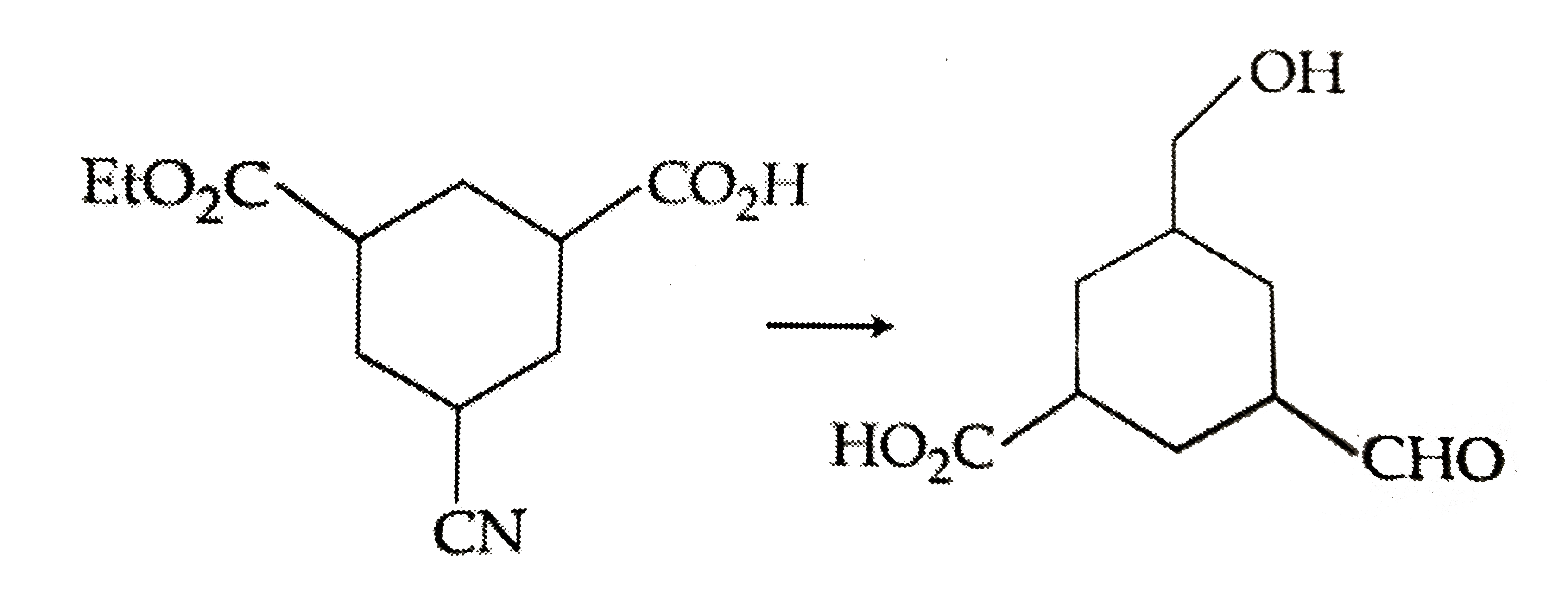The reagent/s required for the conversion R1CH=CHR2→R1COOH+HOOCR2 is (are):
O3 followed by treatment with H2O2
Baeyer's reagent
Hot KMnO4/KOH followed by acidification
Both (A) and (C)
To convert the alkene R1CH=CHR2 into the carboxylic acids R1COOH+HOOCR2, we can use specific reagents that facilitate oxidative cleavage of the double bond. Here’s the step-by-step solution:
Step 1: Identify the Reaction Type
The reaction involves the oxidative cleavage of an alkene to yield two carboxylic acids. This can be achieved using reagents that promote oxidative ozonolysis or oxidative cleavage.
Step 2: Use Ozone (O₃) for Ozonolysis
The first reagent we can use is ozone (O₃). When the alkene R1CH=CHR2 reacts with ozone, it forms an ozonide intermediate. This process involves a pericyclic mechanism where the double bond of the alkene reacts with ozone.
Step 3: Hydrolysis of Ozonide
After forming the ozonide, we need to hydrolyze it. This can be done by adding hydrogen peroxide (H₂O₂) as a mild oxidizing agent. The ozonide reacts with H₂O₂, leading to the formation of the carboxylic acids R1COOH and HOOCR2.
Step 4: Alternative Reagents - Baeyer’s Reagent
Another method to achieve this transformation is through the use of Baeyer’s reagent, which is dilute potassium permanganate (KMnO₄). However, this reagent typically leads to the formation of diols rather than carboxylic acids unless used under specific conditions.
Step 5: Hot KMnO₄ in Basic Conditions
For oxidative cleavage to carboxylic acids, we can use hot potassium permanganate (KMnO₄) in the presence of a base (KOH). The reaction proceeds through the formation of a diol intermediate, followed by oxidative cleavage under hot conditions, leading to the formation of the carboxylic acids.
Conclusion
The reagents required for the conversion of R1CH=CHR2 to R1COOH+HOOCR2 are:
1. Ozone (O₃) followed by hydrogen peroxide (H₂O₂) - Option A.
2. Hot KMnO₄ in the presence of KOH followed by acidification - Option C.
Thus, the correct answer is that both options A and C are valid, leading to the final conclusion that the answer is option D (both A and C).
---
The reaction involves the oxidative cleavage of an alkene to yield two carboxylic acids. This can be achieved using reagents that promote oxidative ozonolysis or oxidative cleavage.
The first reagent we can use is ozone (O₃). When the alkene R1CH=CHR2 reacts with ozone, it forms an ozonide intermediate. This process involves a pericyclic mechanism where the double bond of the alkene reacts with ozone.
After forming the ozonide, we need to hydrolyze it. This can be done by adding hydrogen peroxide (H₂O₂) as a mild oxidizing agent. The ozonide reacts with H₂O₂, leading to the formation of the carboxylic acids R1COOH and HOOCR2.
Another method to achieve this transformation is through the use of Baeyer’s reagent, which is dilute potassium permanganate (KMnO₄). However, this reagent typically leads to the formation of diols rather than carboxylic acids unless used under specific conditions.
For oxidative cleavage to carboxylic acids, we can use hot potassium permanganate (KMnO₄) in the presence of a base (KOH). The reaction proceeds through the formation of a diol intermediate, followed by oxidative cleavage under hot conditions, leading to the formation of the carboxylic acids.
The reagents required for the conversion of R1CH=CHR2 to R1COOH+HOOCR2 are:
1. Ozone (O₃) followed by hydrogen peroxide (H₂O₂) - Option A.
2. Hot KMnO₄ in the presence of KOH followed by acidification - Option C.
Similar Questions
Knowledge Check
The reagent(s) required for the following conversion are :
 A(i) NaBH4 (ii) Raney Ni/H2 (ii) H3O+B(i) LiAIH4 (ii) H3O+C(i) B2H6 (ii) DIBAL-H (iii) H3O+D(i) B2H6 (ii) SnCl2/HCl (iii) H3O+
A(i) NaBH4 (ii) Raney Ni/H2 (ii) H3O+B(i) LiAIH4 (ii) H3O+C(i) B2H6 (ii) DIBAL-H (iii) H3O+D(i) B2H6 (ii) SnCl2/HCl (iii) H3O+The reagent used for the conversion
CH3CH2COOH→CH3CH2CH3 , isALiAlH4BSodalimeCRed P and concentrated HIDAmaigamated zinc and concentrated HClThe reagent used for the conversion of CH3CH2COOH→CH3CH2CH3 is
ALiAlH4BsodalimeCred P and concentrated HIDamalgamated zinc and concentrated HCl.
The most suitable reagent for the conversion of R−CH2OH→R−CHO is
View SolutionAmong the following the reagents used for the conversion, (CH3)2CO→CH3CH2CH3 is / are
View SolutionThe most suitable reagent for convertion of R−CH2−OH→R−CHO is
View SolutionThe most suitable regent for the conversion of
R−CH2−OH→R−CHO is
View SolutionSelect the reagent for the given conversion
CH3(CH2)8CH2OH→CH_3(CH_2)_3COOH<br>KMnO_4isaccnaturalalkal∈emedia.<br>K_2Cr_2O_7∈accmedia.<br>CrO_3 in acidic media
View Solution

